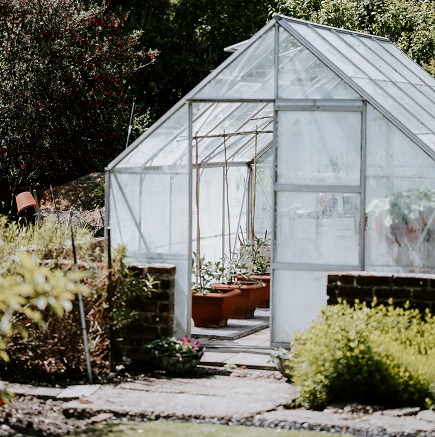
As the days get shorter and weather becomes cooler, gardeners are aware that their summer pastime will soon be coming to an end. For gardeners with tropical or exotic plants outdoors that they don’t want to lose to an early fall frost, transporting plants into a greenhouse is a good alternative. Greenhouses come in a variety of sizes and styles to accommodate almost any gardener’s needs. In this article, we’ll explore a few of the common types of greenhouses that might work for you.
Portable or temporary use greenhouse structures work well for the homeowner who is not ready to commit to a permanent structure. Most temporary use greenhouses are designed with a polyethylene vinyl cover that fits over a steel or aluminum frame. Depending on the size and shape of the structure, it will probably be necessary to do staking or anchoring to the ground so that it doesn’t blow away; however, if you don’t set the stakes in cement, you should be able to easily pull them up and move the greenhouse to another location or pack it away in storage, as needed.
Greenhouse gardening in the fall brings special challenges because you are preparing for the oncoming cold weather of winter. In climates that see a lot of snow and cold temperatures in the winter, a portable greenhouse won’t cut it for overwintering plants. If you’re looking for a way to keep your plants alive all winter long, you’ll probably have to invest in a permanent structure. There are many types of hobby greenhouse kits available through mail order catalogs and specialty online stores. If you will be overwintering plants in the structure, be sure to consider an appropriate heat source. A basic structure with polycarbonate panels will not stay warm enough in temperatures below 30 degrees to keep tropical plants alive all winter, unless you provide some type of heat source.
Indoor greenhouses are another good option, particularly for gardeners who won’t have a lot of outdoor space. Indoor greenhouses can be freestanding shelf units that stand in the corner of a room or small tabletop units that occupy a shelf or workbench. The primary difference between indoor and outdoor greenhouses is that with an indoor unit, you will need to provide some type of artificial light for your plants. Before choosing the type of light, first evaluate the temperature in the room. Is it warm enough for your plants? If the temperature is below 75 degrees, you should probably consider buying a fixture that will supply both light and heat. Take extra precautions with heat lamps. You never want to set a heat lamp too close to anything flammable, including the cover on your indoor greenhouse. If you don’t need supplemental heat, the best option is to buy a fluorescent light fixture and then select full spectrum fluorescent bulbs for it.
The greenhouse that is right for you will depend on several factors, including how long you want to keep tending your plants and how much space you have to dedicate to a greenhouse. No matter what your choice, greenhouses are a great option in the fall for gardeners who want to extend their hobby and maintain their plants through the winter months. Ellen Bell works for a retail website that offers many home and garden products.
Related Articles & Free Email Newsletter
10 Greenhouse Features and Accessories That You Need
How to Avoid 5 Common Greenhouse Growing Problems




Comment here